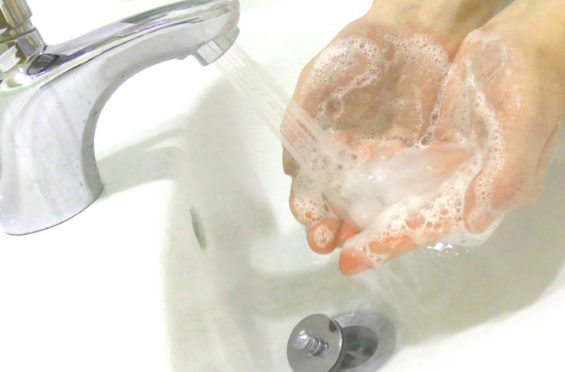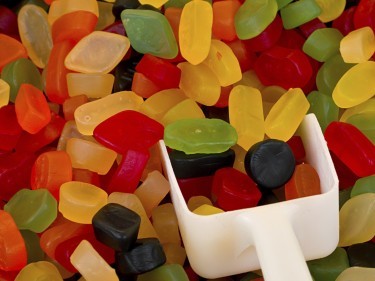We’re a nation obsessed with public hygiene, if recent survey findings are anything to go by. Clean up your act with these expert tips
A recent survey by hand-dryer manufacturer Sterillo (www.sterillo.com) reveals that almost half (44%) of Brits refuse to enter a public washroom unless it smells fresh; 50% refuse to touch toilet seats in public lavatories; 67% associate a smelly lavatory with it being dirty, and 37% flush the toilet with a tissue barrier, to avoid direct contact with the handle.
While these numbers aren’t really surprising (except perhaps the fact that 50% of people DO touch toilet seats in public lavatories), the true level of contamination we’re trying to avoid might come as a shock.
“Over a third of the taps and more than half of an average wash basin in a public washroom is contaminated by coli-forming bacteria,” explains Steve Levy, inventor of the Sterillo. “This is compounded by the issue that most people don’t wash their hands correctly, meaning washroom hygiene can pose a serious risk to public health. We are likely to be exposed to Salmonella, E coli, MRSA and Hepatitis A when we visit.”
Horrible, yes, but sometimes, nature calls and, sometimes, you have no option but to do battle with these alarming armies of bacteria. So if you must join them, at least know how to beat them – both in the public toilets, and beyond…
PUBLIC TOILETS
“After you wash your hands, avoid touching door handles when you exit,” advises Levy. “Even if you do wash your hands well, use toilet tissue as a barrier as you leave the washroom. Ensure you dry your hands well too, as bacteria multiplies rapidly in warm and moist conditions.”
Also, hide your phone (might sound obvious, but again, according to the surveys, much of the UK use their phones while on the toilet), and always shut the lid. “Almost two thirds [62%] of people stated they don’t close the lid before they flush,” explains Levy. “This means every time someone flushes, a germ-filled mushroom cloud is created containing viruses and bacteria that are suspended in the air and take hours to slowly fall, gradually covering toilet cubical doors, walls, floors, toilet rolls and anything nearby.” So choose cubicles that have the lid down.
IN THE SHOPS
You might be picking up more at the supermarket than the latest BOGOF: “A recent survey by the Food Standards Agency found 7% of fresh chicken packaging was contaminated with Campylobacter, bacteria that cause severe diarrhoea, sickness and even nasty side-effects such as reactive arthritis,” warns Dr Lisa Ackerley, health and hygiene expert (www.thehygienedoctor.co.uk). “These bacteria can get on to your hands, onto trolley handles and into your mouth, if you happen to fancy grazing as you shop – or feeding your children snacks.”
The solution is to use anti-bacterial surface wipes on trolley handles to clean them first, and always “wash your hands after a shopping trip and, of course, before eating or preparing foods”. Remember though, it’s not just the trolley/food that’s an issue, so’s the checkout: there are more germs on a £1 coin than a toilet seat, and cash machines are as dirty and carry the same germs as public toilets. Time to go contactless?
ON THE BUS
You already know your commute contains delays, but now you know it contains diarrhoea-causing germs too. “Any number of germs can be found on public transport – from norovirus to the common cold,” says Ackerly. “Contaminated hands from seats, handles, buttons and hand-rails can cause infections easily, so be conscious that your hands may be dirty and avoid rubbing your eyes [a sure way to infect yourself with a cold or flu] and don’t snack on the train – with every lick of the fingers, you are not just transferring cheese and onion flavour, but norovirus, E coli or anything else that is around.”
IN THE GYM
You’re going there to be healthy, but be warned, says Ackerly: “If you use your towel to dry gym equipment, you could be picking up Staphylococcus aureus. It’s commonly found on skin and in around 25% of the population. Some types can be no trouble, but if someone has an infection, it could be passed on to your towel. Always wash the towel in a hot temperature wash, or use Dettol Anti-bacterial Laundry Cleanser to kill 99.9% of bacteria.”
AT THE CINEMA
Everyone loves pick and mix. Which means, sadly, not everyone has the patience to wash their hands before digging in. “If you’re buying sweets in the pick and mix, make sure there are scoops so people are using those rather than their dirty hands – imagine if they’ve just come off a train or tube and then dig in to the sweet selection! All the germs will just transfer onto the sweets.” Not so tasty now.
IN THE OFFICE
“It’s astonishing how many people don’t wash their hands after using the toilet,” says Ackerly, “and if they don’t, then everything they touch afterwards could become contaminated” – from water coolers to keyboards to printers. It’s especially an issue if you ‘hot-desk’: use anti-bacterial cleansing wipes to clean the desk and keyboard, mouse and phone before starting work, so germs left behind by someone else have been removed.”

